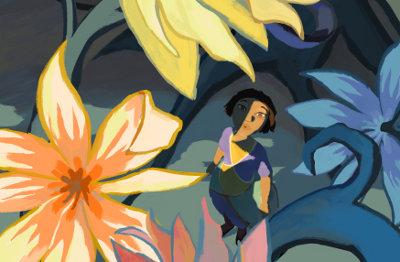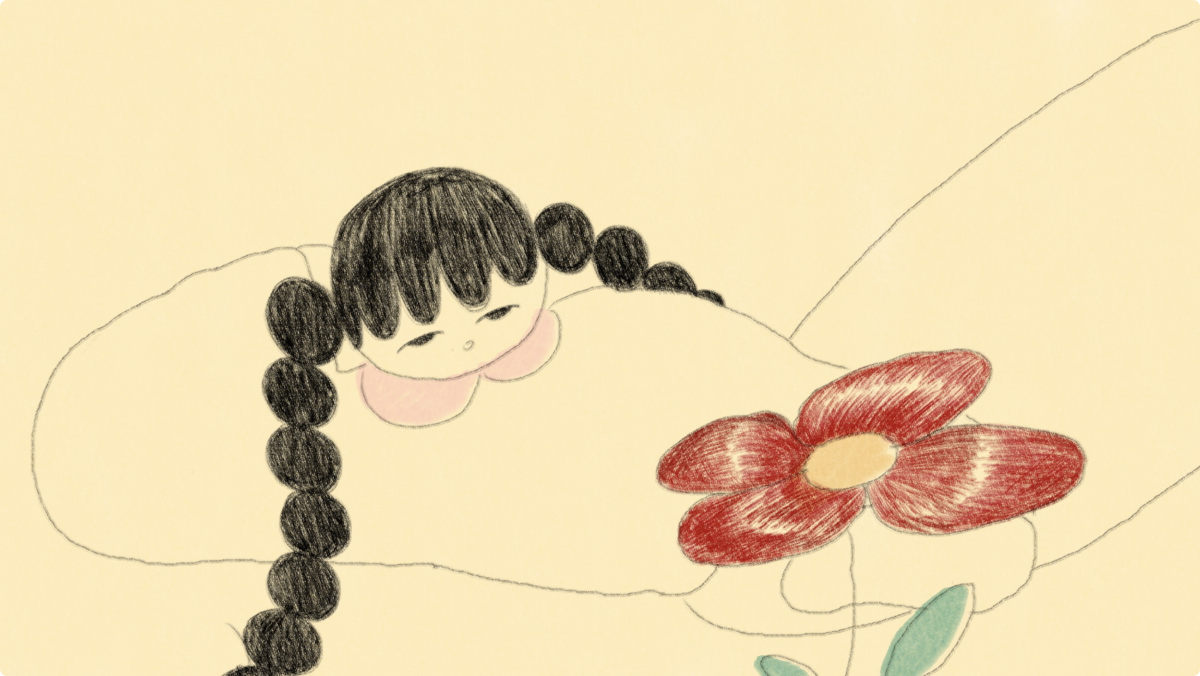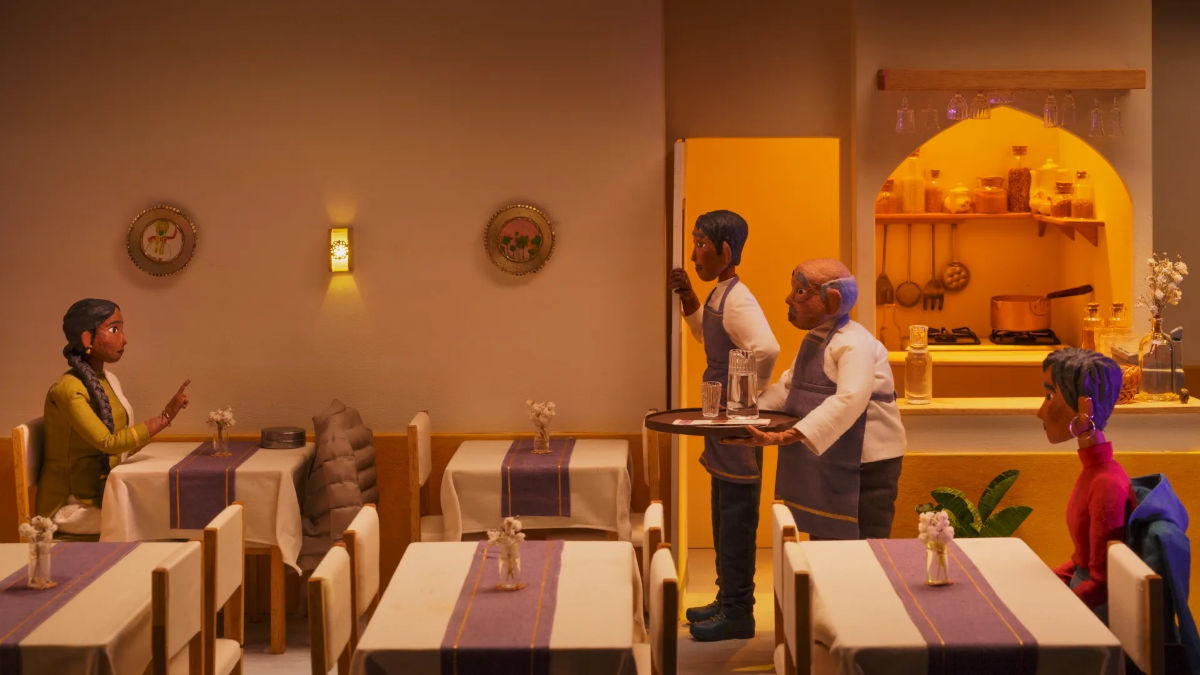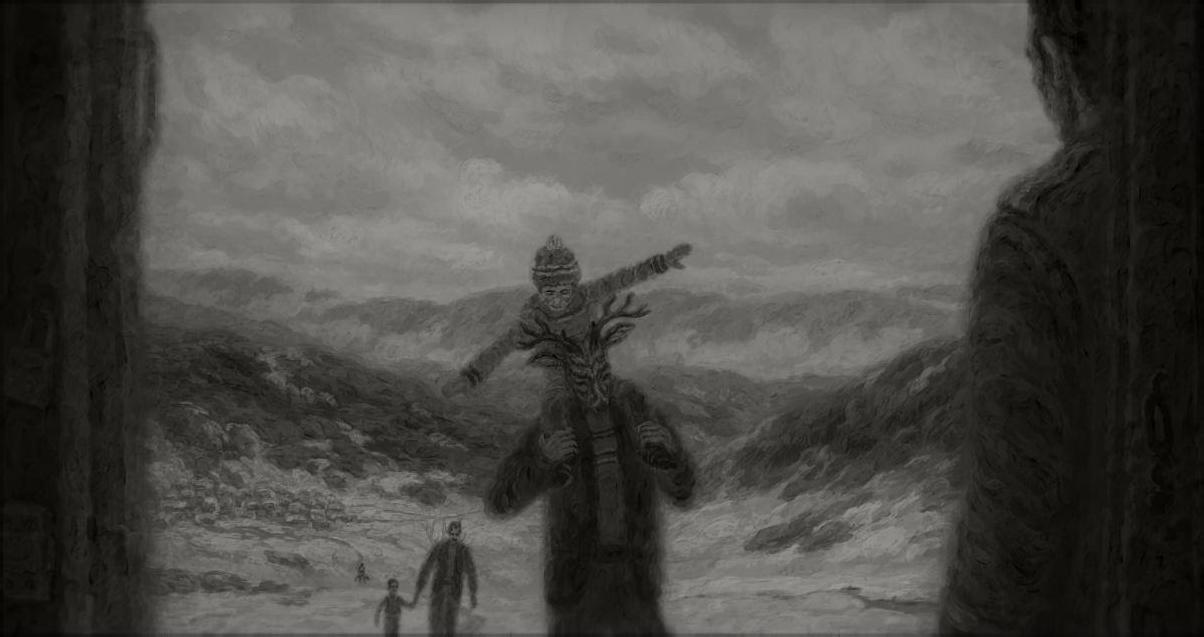Le Tableau (The Painting) Review: The Colored Meaning of Life

Imagine a Platonic state gone wild. It's three classes, Toupins, the completed characters of a chateau painting, rule the other two classes, the Parfinis (the incompletely drawn characters), and the Reufs/Sketches, who are like skeletons.
Parfinis and Reufs are only good for secondary jobs, and Reufs have been reduced to semi-slave status. Yet love between Ramo, a Toupin, and Claire, a Modigliani-faced Parfinis, seems to make things move forward.
This is only the beginning of the latest feature film from 76-year-old Jean-François Laguionie, based on the multi-layered script by Anik Le Ray (Kerity, our film review). What holds multiple narrative strings together is the search for the painter, who is about to finish all class inequalities propounded by the majestic and powerful yellow Candlestick. The unfinished Lola, Ramo, and her Sketch friend (along with a tambourine boy from a war painting) search for the painter.
It is not usual for a film so visually rich and beautiful, almost a Fauvist picture in motion, to undermine all its pretty qualities with its subversive message. The most prettily drawn characters, the Toupins, are also the most hateful. A carnival in Venice (a central locus of action) is also a place for grave danger, even though the death character chasing the heroes unfairly reminds one of Roeg's Don't Look Now (1971). The incredibly pretty natural environment surrounds, engrosses, and almost suffocates the characters.
Yet the human spirit goes on. A dangerous forest adventure becomes no more than a human prejudice, and the Venice incident (coupled with an engrossing, but not overpowering orchestral soundtrack by Pascal le Pennec) safely leads to the final battle and confrontation with the Toupins -and the film's happy ending.
However, Le tableau is not only a kids' film, but also celebrates love above class struggle. What makes the film exquisite is the relation between the artist and his/her artifacts. There are many films that contemplate what will happen if the art objects become alive; however, the need to find the artist recalls the need for a God-creator, and the quest for both human independence and happiness.
Can happiness be achieved even in an unfinished state? Most of the characters attempt to paint themselves at the end of the film, sometimes with mixed results. Lola dares to meet her creator (played by the director himself), and ask his view about that, which will not be what all the characters hoped for.
Le tableau is a visual feast, yet it uses its exquisite aesthetic to contemplate about its own nature and the need to ask -not acquiesce in beauty itself.
Vassilis Kroustallis








